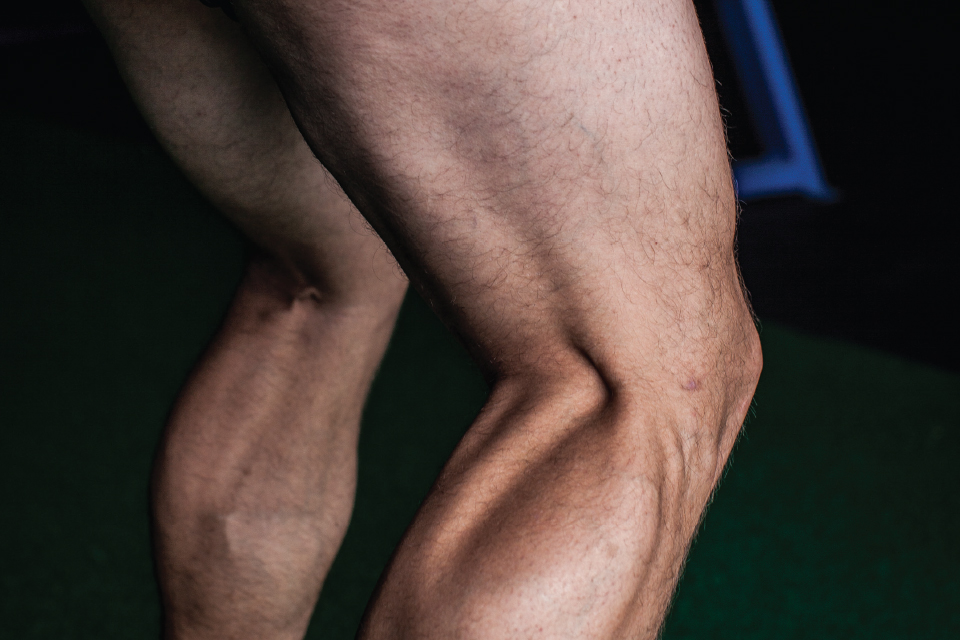Your Hamstring

There are two bony projections on the bottom of the pelvis, one on the left and one on the right, and the hamstrings connect to these (called the ischial tuberosity). The hamstrings run down the leg, cross the knee joint, and then connect on either side of the shinbone (tibia).
Hamstring: It’s not one muscle
The hamstring is actually made up of three muscles (the semitendinosus, semimembranosus, and biceps femoris) that are located in the back of the thigh. They work to bend (flex) the knee and straighten (extend) the hip.
Stretch your hamstring
(make sure your muscles are warm first)
Downward-Facing Dog
• Place hands on the floor, palms down and shoulder-width apart.
• Walk the feet back, keeping a bend in the body and the hips pushed up toward the sky. Feet should be hip-width distance apart.
• If you can’t get your heels flat to the floor, modify the pose by bending the knees and pushing the tailbone high. Lean the hips back and hang the head down. You can “walk” the feet (alternate lifting one heel and then the other).
• Hold the pose and feel the muscles stretch.
Bridge
• Lie on your back, with both feet on the floor and knees bent.
• Push through your feet to raise the hips upward.
• Lower hips back to the floor for one repetition.
• Start with three sets of eight repetitions; build to three sets of 12 reps, and move to single-leg bridges (these are done in the same way, except you raise one leg while squeezing the gluteal muscles and maintaining a straight line from the ground to the knee at the top point of the exercise).
Standing Knee Flexion
• Stand up straight.
• Keep one leg straight and balance while bending the other, bringing the heel toward the buttocks.
• Start gently and slowly, using gravity as resistance.
• Aim for three sets of ten repetitions each; build up to four sets of 20.
• Increase the load with ankle weights as proficiency improves.
Ways to injure the hamstring
• Overstretching
• Sprinting and other fast or twisting motions
• Low level of fitness
• Poor flexibility
• Muscle fatigue
• Failure to warm-up properly
• Muscle imbalances between legs or muscles (such as quadriceps)
Three types or “grades” of hamstring injuries
Grade One: mild (hamstring pull; not much damage to structure of tissues; slight feeling of pain, like a cramp or tightness, when activity is over)
Grade Two: moderate (partial tears; usually immediate pain with both contracting and extending, will be sore to the touch)
Grade Three: severe (complete tearing; there is intense burning or stabbing pain; walking is painful; a large knot or bruise may form on the back of the thigh)
Do you really “tear” your hamstring?
Yes. The fibers of the hamstring are actually torn; pain and swelling result from the enzymes and other body chemicals sent to repair the damage. Severe tears can also damage blood vessels and even pull the muscles away from the bone. These tears are more involved to repair; blood vessels must regenerate first to get blood to the injured area for healing, and those that tear away from the ischial tuberosity may require surgery to reconnect.
RICE
Rest. Lie down; for more severe injuries, you may need to use crutches to keep weight off the injured hamstring. The goal is to keep more damage from occurring and to form the least amount of scar tissue. Rest might be necessary for a week or more, depending on the type of injury.
Ice. Applying ice slows the metabolism and blood flow in the area, numbs the pain, helps muscles relax, and can reduce muscle spasms. Apply ice in any number of forms (cubes in plastic bags, cold packs).
Compress. Wrapping the injured hamstring in an elastic bandage can help with pain and reduce bleeding in the muscle. That can help reduce swelling and limit scarring.
Elevate. Lie down to raise the leg, supported by pillows, so that it’s above the level of the heart. This helps reduce swelling (and also helps with step 1: rest).
How to ice your hamstring
• Hold the cold therapy to the area with an elastic bandage.
• Keep the cold applied for 20 to 30 minutes at a time.
• Repeat at least four times a day for the first two to three days after injury.
• Use as often as every two hours.
NSAIDs or No NSAIDs?
An NSAID is a nonsteroidal anti-inflammatory drug. Ibuprofen is an NSAID; brand name ibuprofen includes Advil and Motrin. FYI: Tylenol is acetaminophen, which is an analgesic (pain reliever) and antipyretic (fever reducer).
There are two schools of thought on using NSAIDs for hamstring injuries.
PRO = start using right after the injury to reduce swelling and pain, and continue for three to five days.
CON = do not use NSAIDs during two to four days following the injury, as the body’s natural healing process is important and shouldn’t be interfered with.
Small children seldom have injured hamstrings because they are so flexible.
Check out Steve Cuddy’s article “Hamstring Stretching” about flexibility and these hamstring-strengthening moves from Diane Vives in “Single Leg Stance for Total Body Performance”






